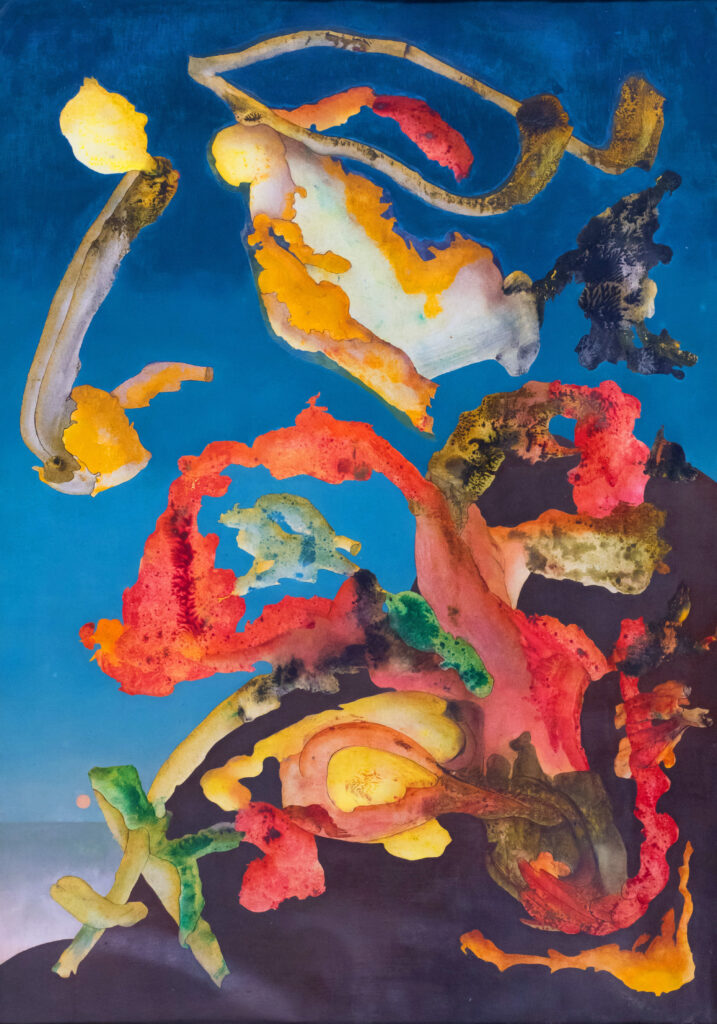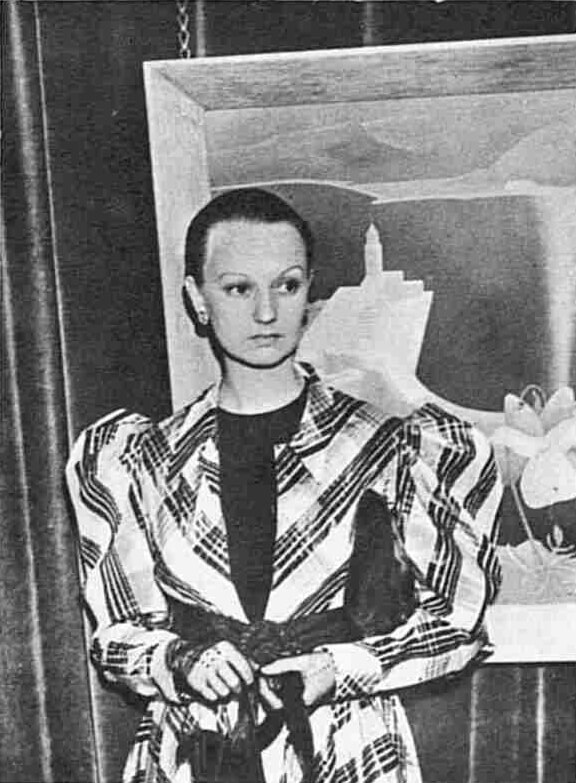Your currently viewing RAW Modern | Switch to RAW Contemporary
DREAMING LEAPS: IN HOMAGE TO SONIA ARAQUISTAIN, 1945
Dreaming Leaps was inspired by the life and tragic death of Sonia Araquistain (1922–1945), a 23-year-old artist deeply engaged with dreams, psychoanalysis and Freudian theory. Araquistain took her own life on 3 September 1945, an event that was met with public condemnation, with both the media and authorities criticising her intellectual interests as “unsuitable”. It was this societal backlash that prompted Colquhoun’s artistic response.
The painting exemplifies the Surrealist movement’s commitment to personal freedom and its rejection of restrictive societal norms. Through her tribute to Araquistain, Colquhoun critiques the repressive cultural and institutional forces shaping British life during this period, emphasizing the tension between individual beliefs and societal expectations.
Exhibited:
London, Mayor Gallery, 1947, 5 – 29 March. Exhibition of Paintings by Ithell Colquhoun. no.
8; Bradford, Cartwright Hall, 1949. 25 March – ? Spring Exhibition. A catalogue is not known, but Dreaming Leaps has been identified from newspaper reviews; Cambridge, Heffer Gallery, 1953, 20 April – 9 May. Ithell Colquhoun. Paintings and Drawings 1942-1953. no. 8.; Penzance, Newlyn Gallery, 1961, 2 – 27 October. Ithell Colquhoun: Retrospective Exhibition of Oil Paintings. no. 6; Exeter, City Art Gallery, 1972, Museum and Art Gallery. 26 Sept.– 21 October. Ithell
Colquhoun: Paintings, Collages and Drawings. no. 6.; Penzance, Newlyn Gallery, 1976, 27 Feb. – 23 March. Ithell Colquhoun: Surrealism, Paintings, Drawings, Collages 1936-76. no. 16; Canterbury, The Herbert Read Gallery, 1986, 19 – 31 May. Surrealism in England 1936, exhibition later travelled to Cardiff and Newcastle. no. 87, as ca. 1946; Leeds, City Art Gallery, 1986, 10 Oct. – 7 December. Angels of Anarchy and Machines for Making Clouds. Surrealism in Britain in the Thirties. no. 29, ill. col. Tate St. Ives, Ithell Colquhoun, Between Worlds, 1 February – 5th May, 2025.
Literature:
Colquhoun, 1981, Women in Art. Oxford Art Journal, 4 (1) p. 65. (A letter responding to an article by Dawn Ades); Schwartz, A. 1989. I Surrealist. Milan: Mazzotta. ill. col. p. 464; Remy, 1999, Surrealism in Britain. Aldershot: Ashgate. ill. col. pl. 140, discussed pp. 240-1; Ratcliffe, 2007, Ithell Colquhoun. Oxford: Mandrake. ill. col. pl. 44. Tate St. Ives, Ithell Colquhoun, Between Worlds (2025).

